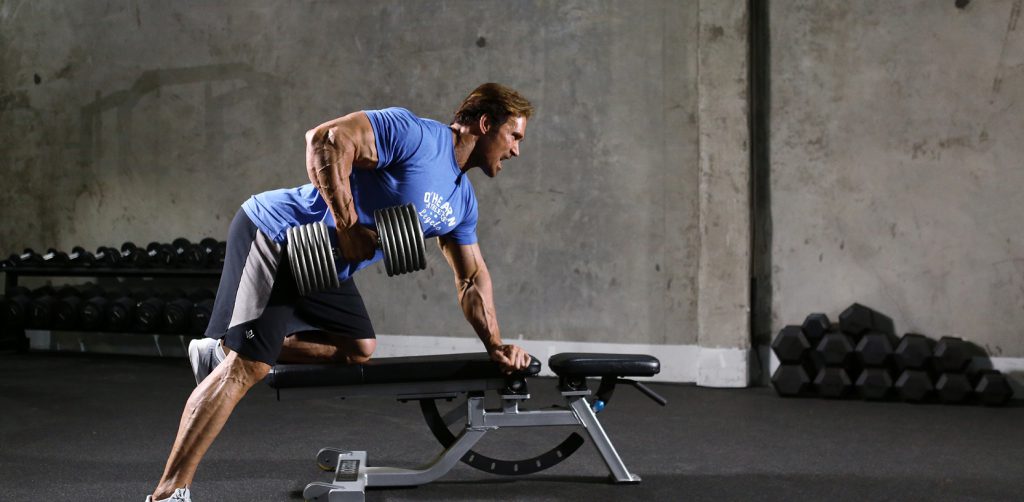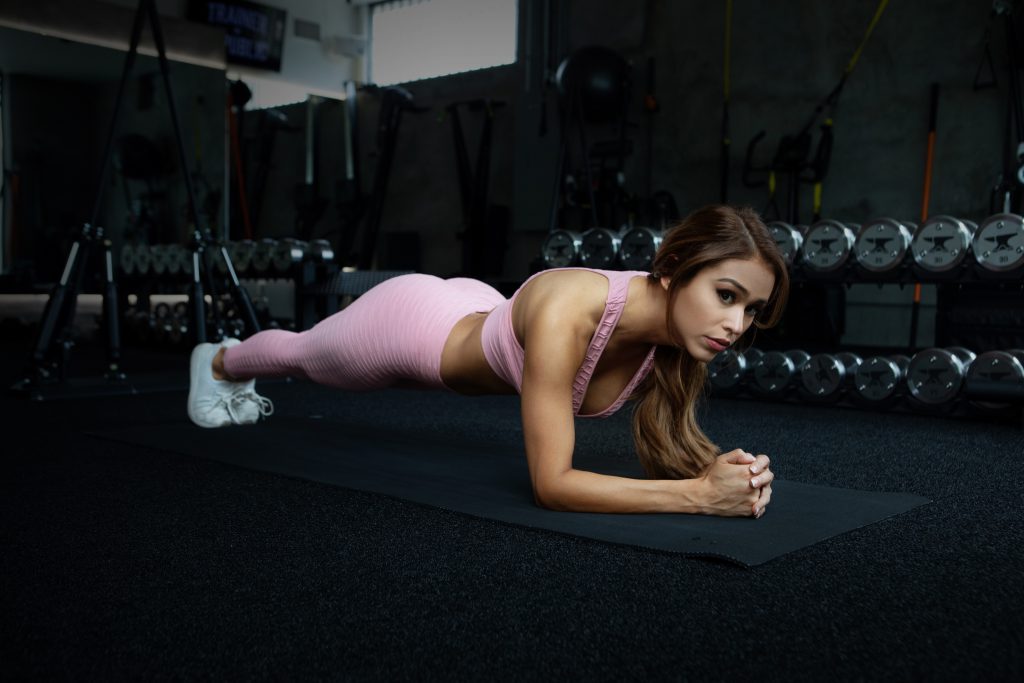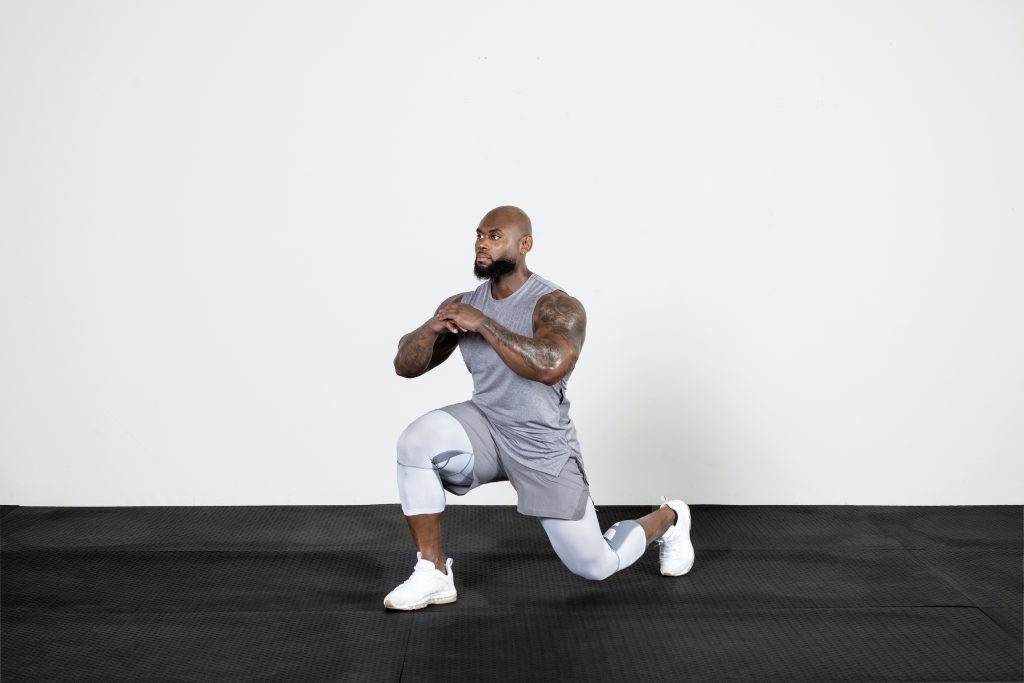The human body is made up of about 600 different muscles. Lifters and fitness enthusiasts categorize these into 6 distinct muscle groups to help them target all areas of their body and make sure they build strength and muscle mass evenly.
You target these muscle groups to prevent the overdevelopment of one area of the body. To make the most of your time at the gym, you can also divide them into pairs that are complementary and thus easier to work out together during the same session.
Understanding how the various muscle groups in your body function together will help you work out smarter. Read on for all the information you need about pairing muscle groups.
(Note: Want our elite trainers to help you tone and strengthen all of your muscle groups? Start your Fitplan free trial today!)
Muscle Groups of the Human Body
People tend to divide the body’s muscles into groups in different ways depending on their focus. For our purposes, smooth muscles, cardiac muscles, and the smaller muscle groups that help with specific functions like eye and jaw movement will be left out in favor of larger muscles that you can build up with a weight training workout routine.
When you’re trying to build muscle, it’s best to focus on areas of your body and the muscles that underlie them, rather than think about tons of different muscles out of context. Generally speaking, you could say the major muscle groups of the human body are as follows:
- Biceps (arms)
- Triceps (arms)
- Deltoid (shoulder)
- Erector Spinae (spine)
- Trapezius (neck & shoulder blades)
- Latissimus Dorsi & Rhomboids (back & shoulder blades)
- Pectorals (chest)
- Abdominals (abs)
- Obliques (sides)
- Glutes (rear)
- Quadriceps (thighs)
- Hamstrings (thighs)
- Gastrocnemius & Soleus (calves)
As you can see, some of these muscles have proximity to one another that lends itself naturally to larger groupings. Most of these groupings should feel intuitive to anyone who has spent time working out in the past if you can imagine the movements that target each group.
Helpful Hint: Use the compound exercises in our Slay the Weights Fitplan to build full-body strength in all your major muscle groups!
6 Major Muscle Groups for Working Out
We can reduce our list of muscle groups by combining some of them to get the 6 major muscle groups that bodybuilders, lifters, and fitness enthusiasts should be targeting throughout their weekly routines. For example, the biceps brachii and triceps brachii can be combined with forearm muscles like the brachioradialis into a general Arm group.
Further combinations can be made by combining that group with muscles that frequently work in tandem with the arm, like the shoulder and chest muscles.
Here are the 6 major muscle groups for working out:
1. Front Upper Body – Triceps, Shoulders, & Chest
2. Rear Upper Body – Biceps, Shoulders & Back
3. Back – Shoulders & Erector Spinae
4. Core – Abdominals & Obliques
5. Lower Body – Glutes & Hip Flexors
6. Legs – Hamstrings, Quads & Calves
There’s some overlap between these groups but that’s because sections of the human body function differently in different areas. For example, the bicep and the tricep are both in the same part of the arm but they help during pushing & pulling motions, respectively.
This interplay between different muscle groups makes it easier to combine them for significantly more effective workouts. Just looking at the 6 different groups, you’re probably able to guess which ones should be targeted together during your strength training sessions.
Best Muscle Group Combinations & Exercises
Upper Body – Front & Back
Your biceps work with the abs and back muscles to execute pulling movements while the triceps team up with chest and shoulder muscles to complete pushing movements. Working out these closely related muscle groups during the same workout session is ideal because one group can rest while the other is working.
That means you can work both to exhaustion without long rest periods that will kill your drive. Alternating between bicep/back exercises and triceps/chest/shoulder ones allows you to fully exhaust both muscle groups, which will increase hypertrophy after the workout is finished to build greater strength and increase muscle growth
Best Upper Body & Chest Exercises
1. Incline Chest Press
This move provides most of the same benefits of a bench press without requiring you to break form and adjust weights or fuss around with bumper plates. You’ll need dumbbells and an incline bench set between 45 and 60 degrees.
Lie on the incline bench facing up with your feet flat on the ground. Pick up one dumbbell in each hand using an overhand grip (palms facing ahead of you) before raising them more or less above your eyes with your elbows almost straight.
Take a deep breath in while you slowly lower the dumbbells toward the top of your chest. Move them to the outside of your torso when they get near to it. Exhale and push the weights back up to the starting position, taking care to keep your elbows directly underneath your wrists throughout the exercise.
Helpful Hint: Build tons of upper body strength with our Dumbbells at Home Fitplan!

2. One-Arm Dumbbell Rows
Build a massive back with this move. All you need is a flat bench and a dumbbell. Place the dumbbell to one side of the bench where you can reach it and then get into the starting position.
Put your left leg onto the bench and grab the left side of the bench with your left hand. Next, bend your torso until it’s parallel with the ground. Pick up the dumbbell with your palm facing your body.
Bring the dumbbell up to your chest by hinging your elbow. Make sure you’re lifting with your shoulders and back muscles rather than your arms. The biceps will get a nice workout incidentally anyway.
Slowly lower the dumbbell back to the starting position. Complete all your reps with the right arm before switching to the left side to do the same number.
3. Dumbbell Triceps Kickbacks
You can do these kickbacks with or without a bench. If you don’t have one handy, just bend your knees slightly and hinge at the hips until your forehead is nearly facing the ground.
Take a dumbbell in each hand with your palms facing each other. Maintain a straight spine and tuck your elbows in at your sides. Lift the weights until your elbows are at a 90° angle and then lower them until your arms are straight.
Your hands should be slightly behind your body when your elbows are straight. Count off one rep each time you return to the 90° angle.
4. Lat Pulldowns
The lat pulldown machine is the easiest way to perform this exercise but you can still give your latissimus dorsi a great workout by approximating this move with a resistance band and a horizontal object like a broomstick. There’s no better way to work that specific muscle than pulldowns.
If you’re using a machine, sit down and put the pad down so that your legs are secured. This resistance is what prevents the resistance in this exercise from pulling your body upward, which wouldn’t allow your body to build stronger muscle fibers like it does during resistance training.
Grab the overhead bar with a wide reverse grip. Meaning with your palms facing behind you. The reverse grip activates your back and forearm muscle groups with less emphasis on the biceps brachii, which is better for overall strength and functionality.
Retract your shoulder blades and pull the bar down to the front of your chest. Resist the temptation to lean forward. Slowly lift the bar back to the starting position to complete one rep.
5. Barbell Overhead Press
This is a favorite bodybuilding move but it may require building strength with similar moves like the seated dumbbell shoulder press. Once you do have the necessary strength and wrist mobility, though, the overhead press has tons of muscle-building potential.
If you’re new to weightlifting, you may want to have a personal trainer or more experienced lifter nearby to spot you. Take the barbell off the rack and hold it with your palms shoulder-width apart and facing the ceiling. The bar should be on the front of your shoulders.
Press the bar directly overhead and then return it to shoulder level. Make sure you squeeze your shoulder blades and tilt your head up so that that barbell doesn’t hit your chin or nose.
6. Hammer Curls
Hammer curls activate the biceps, brachialis, and brachioradialis, three individual muscles that are hugely important for moving the elbow. You really have to use dumbbells for this move because kettlebells and other weights don’t allow for the necessary wrist movement to happen.
Stand with your feet together and make sure your back is straight. Don’t lock your knees or back in place, just engage your core muscles to provide some extra stability. Pick up a dumbbell in each hand with the weights facing forward and behind you, respectively. Your palms should face your body and your thumbs should face forward.
Starting with the weights down by your sides, slowly lift until your thumbs are near your shoulders and your elbows are bent at a ninety-degree angle. Lower them back to the starting position to complete one rep.
Helpful Hint: Maximize your functional strength with the exercises in our Viking Strength & Function Fitplan!
Back & Core
The muscles on both sides of your torso work to stabilize much of your body. They attach to your spine and are involved in every movement between your upper and lower body. Strengthening each will help you achieve better balance and prevent injury.
If you want a chiseled 6-pack, you have to develop your back and oblique core muscles as well. Otherwise, your athletic and everyday performance will suffer and you’ll be significantly more prone to injuries. Luckily, many of these exercises can be done with bodyweight only and don’t require fancy equipment or a gym membership.
Best Back & Core Exercises
1. Crunches
This straightforward exercise is an essential part of any training program that aims to build core strength. All you need to do is lie down on the ground with the soles of your feet planted hip-width apart and your spine and head aligned. Cross your arms over your chest.
Relax your neck and shoulders while engaging your core. Tuck your chin and lift your upper back while leaving your lower back on the floor. Rise until you’re as close to your knees as possible and then return to the starting position.

2. Plank
The position for planking is similar to a push-up, except you’ll have your forearms on the ground instead of just your palms. It builds tremendous core and back strength, but it’s actually a full-body workout that will build strength in many muscles throughout the body.
Support your lower body with your toes and make sure your elbows are directly underneath your shoulders. Maintain a straight line from your head to your heels. Drive your elbows into the ground and engage your glutes, core, and quads. Hold that position for as long as you can before resting and repeating one or two times.
3. Mountain Climbers
Mountain climbers strengthen your core while adding in a bit of cardio that will also provide countless health benefits like a better-functioning nervous system. They’re a great warm-up, cooldown, or interval exercise for HIIT workout routines.
Repeat the same stance as you did in the plank exercise described just above this one. Rather than staying still, lift your right knee up to your chest, taking care not to break your stance. As you lower the right leg back down, bring the left knee up to the chest.
Continue for the same number of reps on each leg to ensure you build strength evenly.
4. Bicycle Crunch
This crunch variation keeps your abs under constant tension, which makes it great for reaching muscle exhaustion in your core. Get into the same position you got into for the crunch we described at the beginning of this section.
Bend your right knee toward your chest and extend your left leg, lifting it off the ground slightly. Lift your upper back and bring your left shoulder to meet your right knee. Bring your left shoulder back to the ground and switch leg positions, then repeat the same motion on the other side of the body.
Legs & Lower Body
A great deal of our bodies’ functional strength comes from muscle groups in our lower body, notably the glutes, hamstrings, and quads. Building lower-body strength can prevent injuries that might otherwise impair your ability to get around or continue with your workout routine.
Leg day is an integral part of any bodybuilding program. Even if you do build big muscles in your arms, you’ll need lower-body strength to prevent becoming too top-heavy.
Best Leg & Lower Body Exercises

1. Lunges
You can make this bodyweight exercise more challenging with a resistance band or you can do the “walking” variety to get a bit of extra cardio during your workout. Your quads, hamstrings, glutes, and calves will all be a target with lunges.
Start from a standing position with your hands on your hips or holding weights if you want to build some upper-body strength at the same time. Take a large step forward with one leg and keep moving your upper body forward by bending the leading knee until it’s at a 90° angle.
Your rear knee should get close to the ground without touching it. Make sure your leading knee doesn’t pass your toes and try to get your rear shin parallel with the floor. Push through your leading heel to get back into the starting position and repeat the same process with the other leg in front.
2. Leg Extensions
There’s a dedicated machine at the gym for leg extensions. All you need to do is set your weight and get into the machine with the pad securing your thighs in place. Place your hands on the bars at either side and then lift the weight with your legs until they’re almost straight.
Bring the weight back down and repeat. The quadriceps are the main beneficiaries of this exercise.
3. Barbell Hip Thrust
A favorite of lifters who get their routine finished from a home gym, you can substitute the barbell in this exercise with any weighted object that you can keep in position. They also call this move a glute bridge because it builds so much strength there. It also works the entire back of your legs.
Get into a position as if you were about to do crunches: back flat, feet planted on the ground hip-width apart. Take the barbell and place it on your lap right where your hips bend. Instead of raising your back off the ground like you would in a crunch, lift your hips by pushing through your heels.
Lift your hips until there’s a straight line running from your neck to your knees. Hold that position for a few seconds and then lower your hips.
4. Bulgarian Split Squat
Find an elevated surface or bench for this exercise. Stand in front of it and then extend your right leg behind you and place your toes on the elevated surface. Make sure you have good posture and then slowly lower your torso by bending your left knee.
Stop when your left knee is a 90° angle. Your right knee should almost touch the floor, but not quite. Rise to the starting position and repeat all your reps on the left knee before switching to the other leg.
Helpful Hint: Get started on your fitness journey with our Beginner Aesthetics Fitplan!
Conclusion:
Understanding how the various muscle groups in the human body work together can help keep your gym day split into modules for more even strength and muscle building. Working your upper body one day, your core, and back the next, and then finishing with leg day will ensure that you have toned muscles all over your body.
The exercises in this guide are the best at targeting their respective muscle groups and there are tons of variations of each one that you can use when you need a change. Include them in your workout routine for superior muscle activation and increased muscle mass.
(Note: Want our elite trainers to help you build a workout routine that works for you? Start your Fitplan free trial today!)


